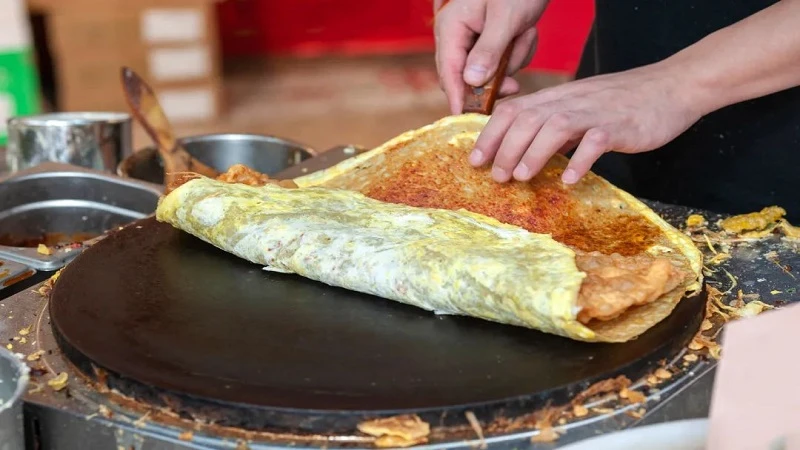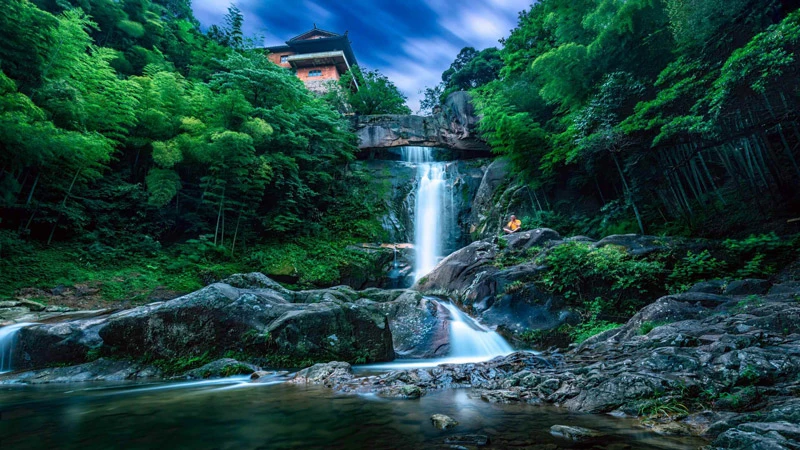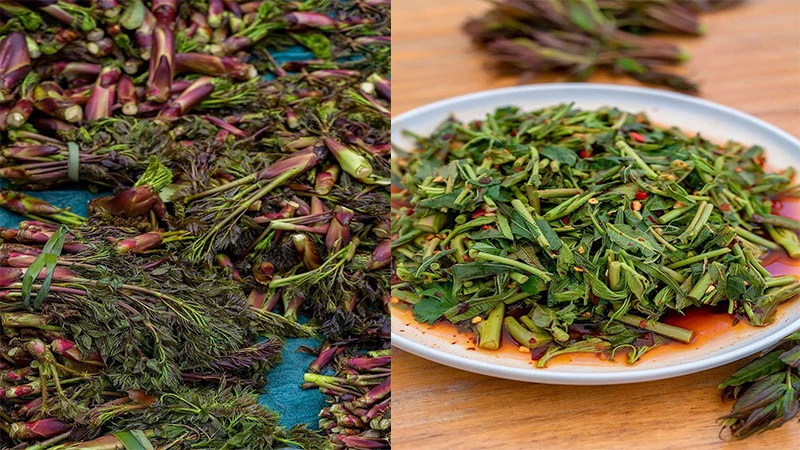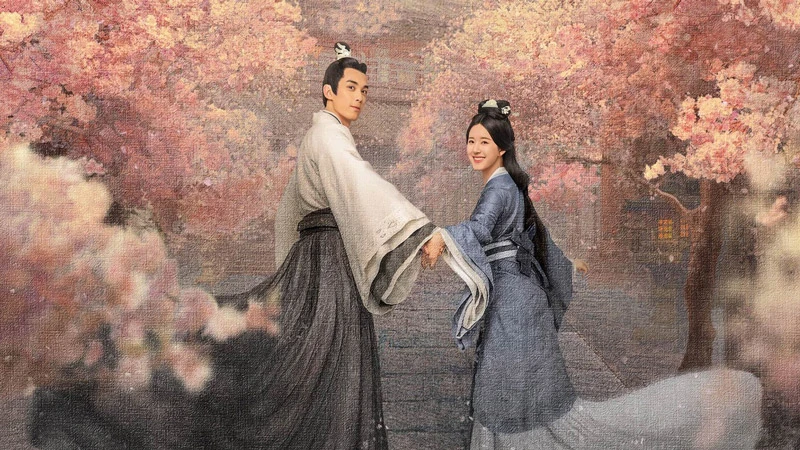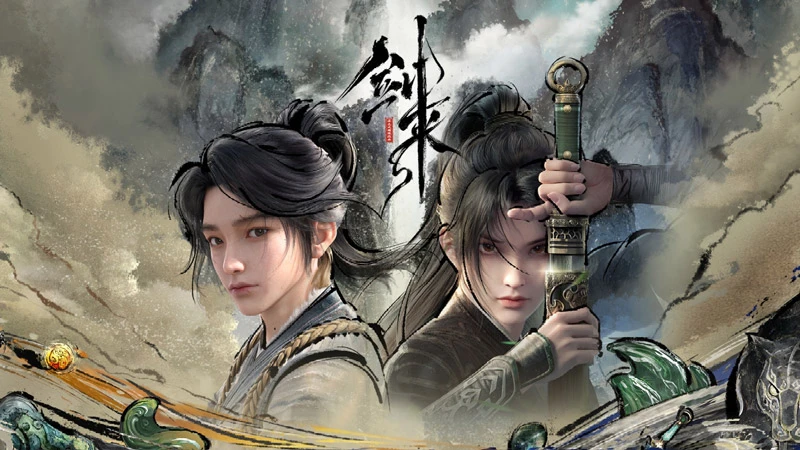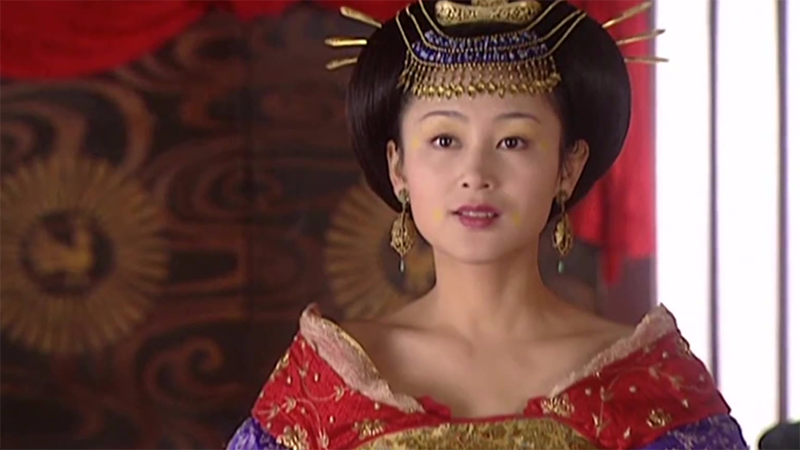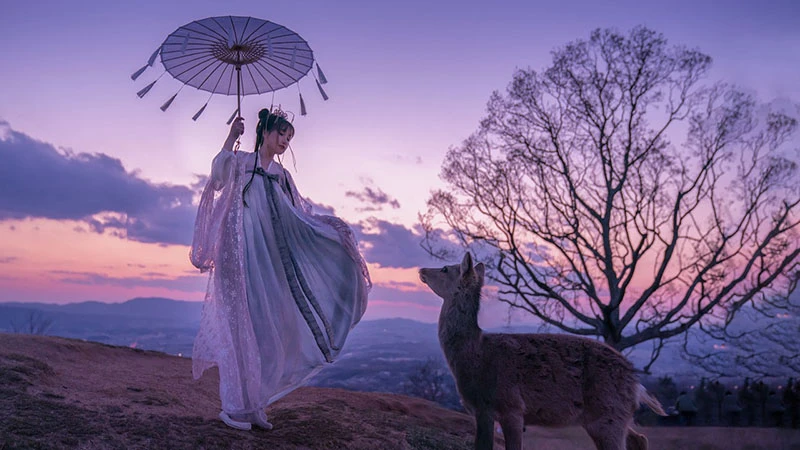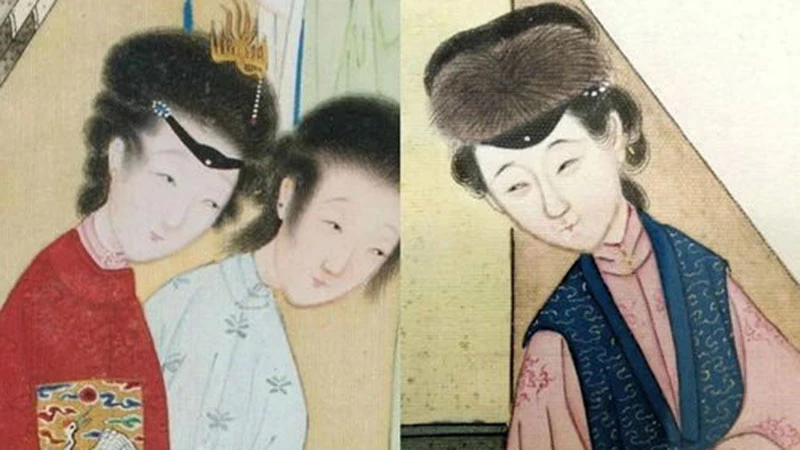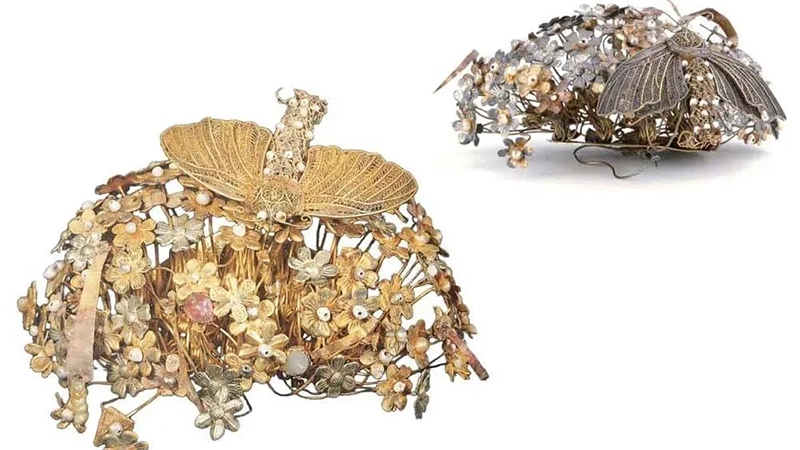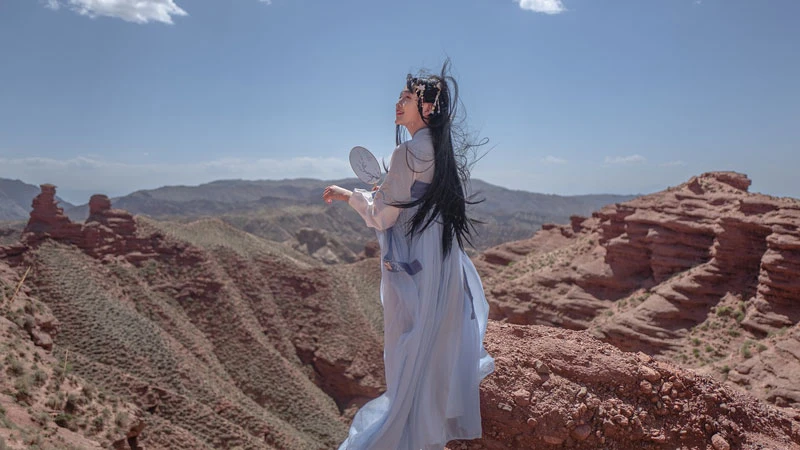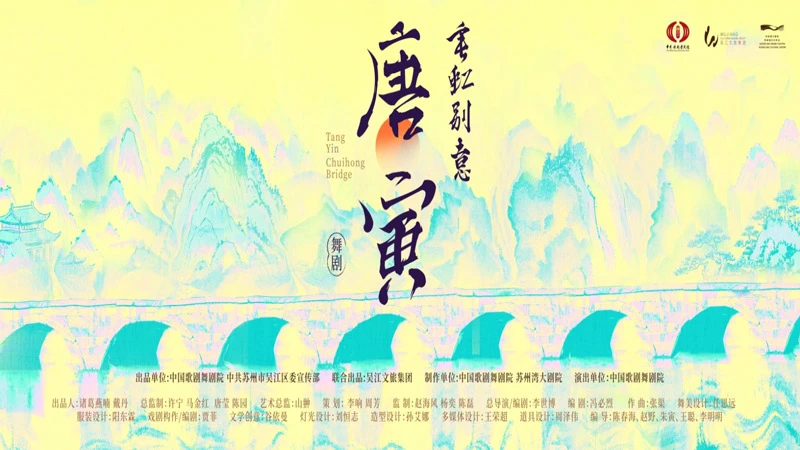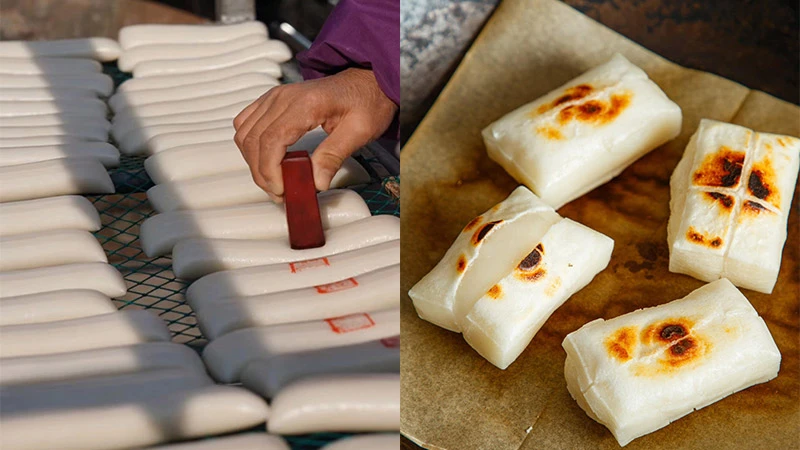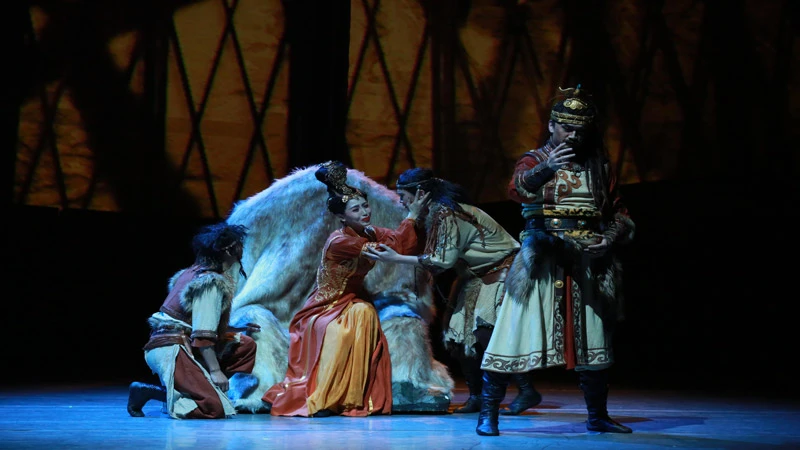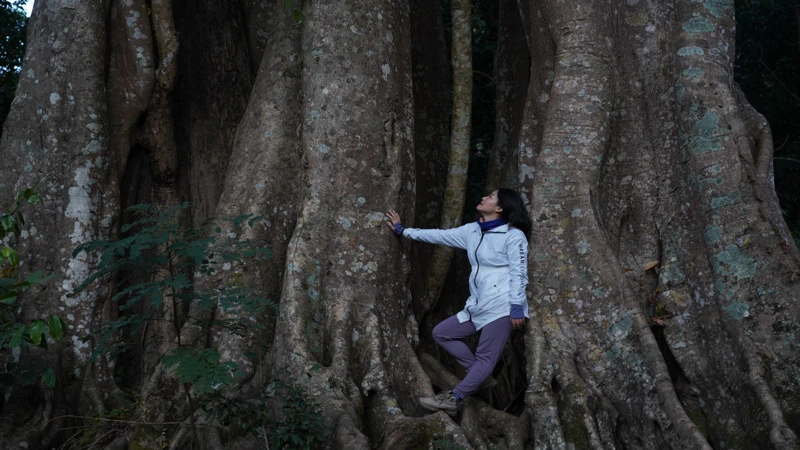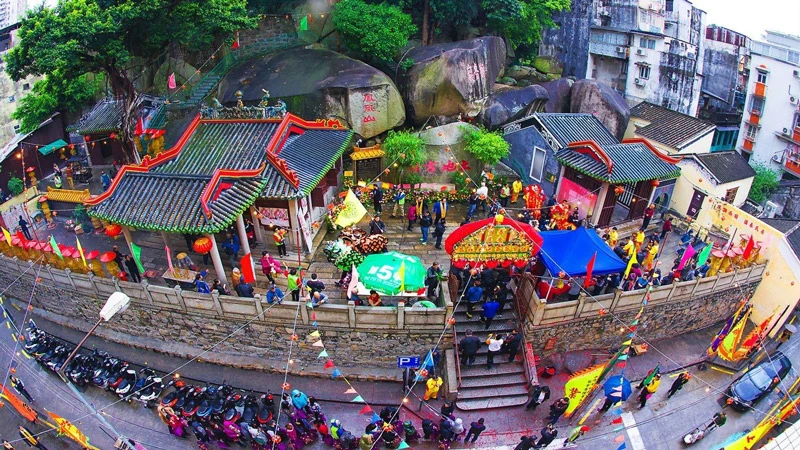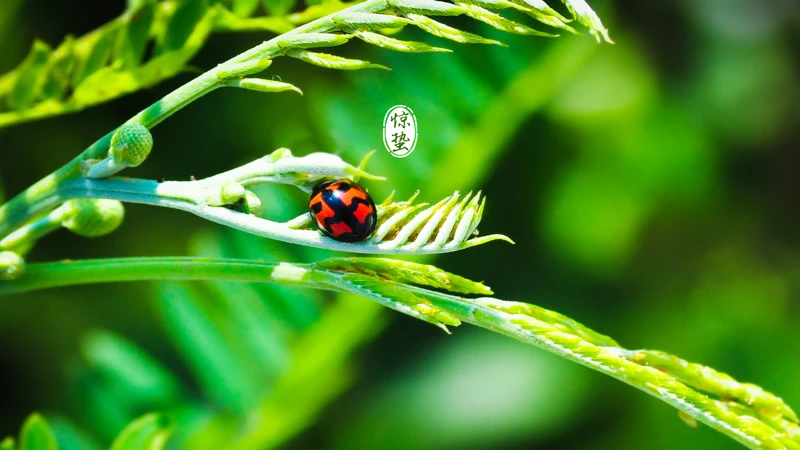Article
搜索结果:
-
Culinary Crossroads: From Pineapple Pizza to Candy Dumplings
In the labyrinthine alleys of Tianjin, a traveler's innocent request for lettuce in their Jianbing guozi (Chinese crepe) might elicit a side-eye from the vendor. In Rome, a photo of Hawaiian pizza could send an Italian chef into a theatrical meltdown. And in Guizhou, a bowl of Zhe'ergen (fishy-smelling herb) tossed with strawberries might make locals recoil in horror. Welcome to the deliciously contentious world of food purism—a global phenomenon where culinary traditions are guarded like sacred texts, and even the slightest deviation can spark international outrage. Food, it turns out, is more than sustenance—it's a battleground for cultural identity. Recently, a fiery exchange between Italian and Chinese netizens went viral, with an Italian woman named Maria clapping back at Chinese commenters who trolled her with images of broken spaghetti and pineapple-topped pizza. Instead of crumbling, Maria retaliated with photos of candy-stuffed dumplings and zhe'ergen-strawberry salads, leaving Chinese foodies equally scandalized. This culinary "mutual assured destruction" revealed a universal truth: Every culture has its gastronomic red lines. For travelers, navigating these unspoken rules can feel like walking through a culinary minefield. But understanding the why behind the drama—why a lettuce leaf in a crepe is heresy, or why pineapple on… -
A Literary Pilgrimage Through Zhejiang's Tiantai Mountain
Nestled in Zhejiang Province, Tiantai Mountain—a UNESCO Global Geopark and the birthplace of Chinese Buddhist and Daoist traditions—has unveiled an innovative cultural tourism campaign. Dubbed "Read to Roam", this initiative invites travelers to explore ancient texts while wandering through landscapes immortalized by poets and explorers for millennia. Here's your guide to experiencing this fusion of words and wonder. The Read to Roam Campaign: Where Books Unlock Adventures Running from March 13 to April 20, 2025, the "Read to Roam" program offers a 50% discount on entry to Tiantai's seven core attractions—including the iconic Tiantai Mountain Grand Waterfall and Qiongtai Fairy Valley—to visitors who read one of 15 curated books and submit a 200-word reflection. Why This Stands Out: Literary Time Travel: The reading list spans classics like The Complete Tang Poems of Tiantai Mountain, featuring works by Li Bai and Du Fu, and Xu Xiake's Diary of a Tiantai Mountain Journey, the Ming Dynasty explorer's seminal travelogue. These texts reveal Tiantai's role as a muse for over 300 Tang poets, who penned 1,362 verses about its peaks and valleys. Cultural Immersion: Modern novels like Mao Dun Literature Prize winner The Protagonist sit alongside ancient poetry, bridging China's literary past and… -
A Chinese Spring Journey Through Budding Delicacies
As spring returns to the earth, a culinary revolution sprouts across China—one that turns thorny shoots, toxic buds, and even tree bark into poetic feasts. Join us on a journey where every bite whispers ancient legends and defies modern logic. Nature's Daredevils: Eating Buds Becomes an Extreme Sport In the misty highlands of Guizhou, spring arrives with a dare. Here, villagers forage for the tender shoots of Heshouwu (Polygonum multiflorum), a plant so toxic its roots are used in traditional rat poison. Yet, between late March and early April, its emerald-green buds become a coveted delicacy. "Timing is everything," explains Chef Yang, stirring a bowl of blanched Heshouwu buds at a rustic farmhouse near Puan County. "Pluck them too early, and they're bitter. Too late, and the toxins intensify." Served with chili oil and crushed garlic, the buds carry a crisp, herbaceous tang—a flavor locals describe as "nature's adrenaline rush." This dangerous dance with botany isn't reckless; it's a testament to ancestral wisdom passed down through generations. Meanwhile, in Shaanxi, diners flirt with another perilous pleasure: pagoda tree buds. While its fragrant white flowers are harmless, the tree's young leaves contain alkaloids that can cause dizziness if consumed raw. Undeterred,… -
Top 8 Zhao Lusi's Period Dramas Recommendations
As one of China's most dynamic "post-95" actresses, Zhao Lusi has redefined the landscape of historical and fantasy dramas with her magnetic performances. Her works are not just entertainment—they are gateways to understanding Chinese culture, blending traditional aesthetics, mythological lore, and progressive themes. This guide recommend her top Period Dramas: Love Like the Galaxy·星汉灿烂·月升沧海 Aired: July 2022 Genres: Family Saga, Political Intrigue, Romance Period Background: Loosely inspired by the Han Dynasty (206 BCE–220 CE), with fictional kingdoms and war-torn landscapes. Adapted From: Xing Han Can Lan by Guan Xin Ze Luan. Cheng Shaoshang (Zhao Lusi), a neglected noble daughter, grows up in a family overshadowed by political ambitions. Abandoned by her parents during wartime and raised by a manipulative aunt, she survives by feigning ignorance while secretly honing her intellect and resourcefulness. Her life intertwines with Ling Buyi (Wu Lei), a general haunted by his mysterious past and driven by a quest for justice. Their relationship evolves from mutual distrust to a partnership that navigates familial betrayals, wartime chaos, and court conspiracies. The series delves into Confucian family dynamics, where filial piety clashes with personal ambition. Shaoshang's journey—from a marginalized "left-behind child" to a strategist who saves her nation—mirrors the… -
2025's Ultimate Guide to Xianxia Anime
2025 emerges as a landmark year for Xianxia (仙侠) — a genre blending immortal heroes, ancient mythology, and Taoist-inspired cultivation. This guide highlights the most anticipated Xianxia anime of 2025. Dive into epic tales of celestial battles, mortal struggles, and philosophical depth, all while immersing yourself in China's historical and mythological heritage. A Record of a Mortal's Journey to Immortality: Overseas Strife 凡人修仙传:外海风云 Aired: January 2025 (ongoing) Genres: Cultivation, Adventure, Political Intrigue Cultural Themes: Han Dynasty aesthetics, Confucian values, Taoist philosophy Based on Wang Yu's legendary novel A Record of a Mortal's Journey to Immortality, this highly anticipated arc follows Han Li, a pragmatic mortal navigating the treacherous world of cultivation. The Overseas Strife installment takes the story beyond the familiar sect conflicts and into uncharted maritime territories, where Han Li faces foreign cultivators, demonic sea creatures, and ancient island ruins hiding lost techniques. As an ordinary man relying on intellect rather than destiny, Han Li's journey encapsulates the enduring appeal of the underdog—a mortal striving for ascension in a world dominated by celestial elites. The animation's hyper-realistic art style, reminiscent of traditional Chinese landscape paintings, breathes life into mist-shrouded mountains, oceanic whirlpools, and intricately designed talismans. The attention to… -
Why Have Off-the-Shoulder Outfits Disappeared from Historical Dramas?
In the golden age of historical dramas, off-the-shoulder costumes were a staple, often resembling an ancient version of a "deep V." These bold designs captivated audiences with their dramatic flair, but as modern productions strive for greater historical accuracy, such outfits have largely vanished from the screen. Were these revealing styles ever rooted in historical reality? And what led to their decline in contemporary storytelling? The Historical Roots of Off-the-Shoulder Fashion Contrary to the sensationalized portrayals in early historical dramas, ancient Chinese fashion was far more conservative. While certain artworks, such as the murals in the Xu Xianxiu Tomb (徐显秀墓) or figurines from the Wei and Jin dynasties, might suggest the existence of off-the-shoulder attire, these depictions are often misinterpreted. In reality, such outfits were layered with undergarments, ensuring modesty even with a slightly exposed neckline. For instance, during the Northern and Southern Dynasties, a style known as Daxiu ru (large-sleeved robes, 大袖襦) gained popularity. This design featured wide sleeves and a deep neckline, but it was always paired with a circular undergarment or Liangdang (a type of vest, 裲裆) to cover the shoulders. The result was a look that revealed only the collarbone at most—far from the exaggerated "shoulder-baring"… -
Was Purple Really Forbidden to Commoners in Ancient China?
Purple, often associated with royalty and nobility, has long been considered a color of prestige and power. In ancient China, it was widely believed that commoners were forbidden from wearing purple, reserved exclusively for the elite. But was this truly the case? The answer, as it turns out, is more nuanced than a simple yes or no. The Origins of Purple’s Prestige The perception of purple as a noble color stems from two main factors: the high cost of purple dye and the influence of class systems and cultural trends. However, it’s important to note that not all shades of purple were created equal. The color spectrum includes countless variations, and not every hue was off-limits to the general populace. The Cost of Purple Dye Purple dye was indeed expensive to produce. One of the most common sources of purple dye was the murasaki plant, while another was sappanwood, which yielded a different shade of purple. However, plant-based dyes were less stable and durable compared to mineral-based alternatives. During the Han Dynasty, a breakthrough occurred with the discovery of "Han Purple," a synthetic pigment made from barium copper silicate. This vibrant hue, found on the terracotta warriors of the Qin… -
The Timeless Appeal of the Chinese Forehead Ribbon
In the world of Chinese historical dramas, few accessories are as iconic as the forehead ribbon, or mo’e (抹额). Recently featured in popular series like Fangs of Fortune (大梦归离) and The Untamed (陈情令), this simple yet elegant accessory has captured the imagination of audiences worldwide. But what is the story behind this ancient adornment, and how has it evolved over time? From its origins as a practical tool to its role as a symbol of identity and status, the mo’e offers a fascinating glimpse into Chinese cultural heritage. A Symbol of Identity and Utility The forehead ribbon has a rich history, serving both practical and symbolic purposes. Its earliest recorded use dates back to the Qin Dynasty (221–206 BCE), where it was employed as a military insignia. Known as junrong mo’e (军容抹额), these ribbons were part of the uniform worn by soldiers and ceremonial guards. They were often paired with specific attire, such as red robes and wide trousers, to denote rank and role. Historical texts, including The Chronicles of the Han Dynasty, describe how the mo’e became a standard feature of military dress, symbolizing discipline and order. For women, the forehead ribbon had a more utilitarian function. During the… -
The Misunderstood Beauty of Li Jingxun’s Golden Moth Hairpin
In the world of ancient Chinese jewelry, few pieces have captured the imagination of modern enthusiasts quite like the so-called "Moth Crown" attributed to Li Jingxun (李静训), a young noblewoman from the Sui Dynasty. However, recent scholarly insights reveal that this exquisite artifact is not a crown at all, but a hairpin—a detail that has been overlooked in popular reproductions and adaptations. This revelation not only corrects a historical misconception but also deepens our appreciation for the intricate craftsmanship and cultural significance of this remarkable piece. The Misidentified "Crown" The hairpin, often mistaken for a crown, is a stunning example of Tang Dynasty jewelry. It belongs to the category of buyao (步摇, step-shaking ornaments), which were designed to sway gently with the wearer’s movements. Shen Congwen (沈从文), in his seminal work Research on Ancient Chinese Clothing (中国古代服饰研究), refers to it as a "moth-and-flower hair ornament," (闹蛾儿扑花首饰) while archaeological reports describe it simply as a "hair accessory." The confusion likely stems from the fact that most images of the artifact show only a partial view, leading many to assume it was a crown. However, crowns typically have a base structure, which this piece lacks. Instead, it is a multi-pronged hairpin, a… -
Song Dynasty Fashion: The Truth About Pearl Makeup
The Song Dynasty (960–1279 AD) is often romanticized for its elegance and sophistication, particularly in fashion. One of the most iconic beauty trends of the era was the "pearl makeup," where women adorned their faces with tiny pearls. But did the number and placement of these pearls signify social status or rank? The answer, surprisingly, is no. Pearl Makeup: A Universal Trend Contrary to popular belief, the use of pearls in makeup during the Song Dynasty was not regulated by social hierarchy. While the imperial court had strict rules for official attire and ceremonial dress—such as the number of dragons or phoenixes embroidered on robes—there were no such guidelines for pearl makeup. Pearls were a universal fashion statement, embraced by women across all social strata. The pearls were typically applied to specific areas of the face: between the eyebrows, along the temples, and on the cheeks. These placements were not arbitrary but followed aesthetic principles that highlighted the natural contours of the face. However, the number of pearls used was entirely a matter of personal preference and financial means, not rank. Pearls as a Symbol of Wealth While the number of pearls did not denote social status, their abundance often… -
The Xi Shi Cosplay Taking Over Social Feeds
A Digital Muse Comes to Life In the ever-expanding universe of Honor of Kings (王者荣耀), few characters command as much devotion as Xi Shi. With her ethereal design and strategic gameplay appeal, she’s become a cultural icon—both in-game and IRL. But recently, a cosplayer’s jaw-dropping reinterpretation of Xi Shi’s Poetry Rain Over Jiangnan(诗雨江南)skin has blurred the lines between pixels and reality, sparking debates about artistry, fandom, and the power of China-chic(国潮). The Skin That Started a Frenzy Xi Shi’s Poetry Rain Over Jiangnan skin reimagines the mage-hero in Republican-era China aesthetics: a qipao(旗袍)in muted jade, a white lotus cradled delicately in hand, and hairpins echoing 1920s Shanghai(上海). It’s a nostalgic yet fresh take—one that cosplayer @LingXiaolu_ replicated with surgical precision. Her viral photoshoot nails every detail: The qipao’s embroidered cloud patterns, hand-stitched to mirror in-game textures A custom wig dyed to match the skin’s gradient ash-brown tones A lotus prop crafted from resin and silk, glowing under UV light for that “spellcasting” effect But accuracy alone didn’t break the internet. The Unreplicable X-Factor What catapulted @LingXiaolu_’s cosplay into the stratosphere was her uncanny embodiment of Xi Shi’s essence. Fans noted how her features—almond-shaped eyes, a porcelain complexion, and lips curved like classical ink paintings—mirrored the… -
Breakthroughs in Gene Therapy and AI
On March 15, 2025, two groundbreaking advancements dominated global headlines: a Chinese research team announced a revolutionary gene therapy for Rett syndrome, a rare neurodevelopmental disorder, while another team in Zhuhai unveiled the world’s first “universal embodied base model” for artificial intelligence (AI). These developments, representing milestones in medical and technological innovation, underscore China’s growing influence in cutting-edge scientific research. 1. Gene Therapy for Rett Syndrome: Rewriting the Future of Rare Disease Treatment Rett syndrome, caused by mutations in the MECP2 gene on the X chromosome, primarily affects girls, leading to severe cognitive, motor, and communication impairments. With no cure available, treatments have historically focused on symptom management. A collaborative team from Peking University Health Science Center and Shanghai Children’s Medical Center revealed a gene-editing therapy that successfully restored MECP2 function in preclinical trials. Using a novel CRISPR-Cas9 delivery system, researchers targeted neural cells in animal models, achieving unprecedented repair rates of 85% without off-target effects. In a phase I trial involving 12 pediatric patients, 9 showed significant improvements in motor skills and communication within six months. One patient, a 5-year-old girl from Wuhan, regained the ability to speak simple words and feed herself—milestones previously deemed unattainable. Dr. Huda Zoghbi,… -
Hanfu in Modern Education: Integrating Traditional Attire into School Curriculums
In recent years, the resurgence of Hanfu, the traditional clothing of the Han Chinese people, has gained significant momentum. This revival is not just a fashion statement but a cultural movement aimed at reconnecting with China’s rich heritage. With increasing interest in traditional culture, a growing number of educators and scholars are advocating for the integration of Hanfu into modern school curriculums. But how can historical attire fit into today’s fast-paced, technology-driven education system? Let’s explore the potential benefits, challenges, and practical methods of incorporating Hanfu into modern education. The Historical Significance of Hanfu Before diving into how Hanfu can be introduced into education, it's crucial to understand why it matters. Hanfu, which dates back over 3,000 years, represents the essence of traditional Chinese aesthetics, etiquette, and philosophy. It was the standard attire throughout numerous dynasties until the late Ming and early Qing periods when it was replaced by Manchu-style clothing. Hanfu is not just fabric and embroidery; it is a reflection of Confucian ideals, hierarchical social structures, and historical craftsmanship. By integrating Hanfu into education, schools can offer students a tangible link to their cultural roots. In a globalized world, where Western influences dominate fashion and lifestyle choices, Hanfu… -
New Dance Drama: Illustrating the Romantic Scholar of Tang Dynasty
On March 4, the China National Opera & Dance Drama Theater and Suzhou Bay Grand Theatre jointly announced the launch of the dance drama Chuihong Farewell: Tang Yin (唐寅:垂虹别意). This highly anticipated production delves into the fascinating life of Tang Yin (唐寅), a celebrated Ming dynasty scholar, poet, and painter, known for his artistic brilliance and charismatic persona. Through an innovative blend of dance, music, and visual storytelling, the performance aims to breathe new life into Jiangnan's rich cultural heritage while presenting Tang Yin's personal journey of triumphs and trials. Tang Yin, often regarded as the "Most Romantic Scholar of Jiangnan," was famed for his poetic talent, calligraphic finesse, and exceptional painting skills. Yet, his life was not merely a tale of aesthetic achievement; it was also marked by dramatic twists of fate. From his early years of scholarly ambition to his fall from grace due to a scandalous examination fraud accusation, Tang Yin's story embodies the age-old themes of ambition, disillusionment, and enlightenment. Chuihong Farewell: Tang Yin is set against the picturesque backdrop of Suzhou's Wujiang District, with the iconic Chuihong Bridge serving as a symbolic anchor for the narrative. As a central government-affiliated performing arts institution, the China… -
Wuyuan in Spring: A Symphony of Blossoms and Ancient Villages
If there's a place that embodies the essence of a Chinese spring, it's Wuyuan (婺源)—a picturesque county in Jiangxi Province, crowned by National Geographic as "China's Most Beautiful Countryside" and celebrated for its 100,000-acre seas of golden rapeseed flowers. From mid-March to April, this region transforms into a living watercolor painting, where mist-shrouded Hui-style villages, emerald hills, and vibrant blooms create a scene straight out of a Tang Dynasty poem. Here's your ultimate guide to experiencing Wuyuan's spring magic. The Golden Heart of Wuyuan: Huangling and Jiangling Perched at 500 meters above sea level, Huangling (篁岭) is a 500-year-old village famed for its "ladder to the clouds" terraced fields. In spring, its slopes blaze with golden rapeseed blossoms, creating a cascading tapestry that merges with the village's iconic "Sky Street"—a cobblestone path lined with traditional Hui architecture and artisan shops412. Don't miss the 300-meter-high glass walkway or the cable car ride offering a bird's-eye view of this floral spectacle. Jiangling's (江岭) 10,000-acre terraced fields are a UNESCO-listed marvel and one of China's "Four Great Spring Flower Seas". At dawn, the interplay of mist, sunlight, and golden blooms frames the whitewashed villages below, evoking an oil painting. Pro tip: Hike to… -
Water-Preserved Rice Cake: A Chinese Winter Tradition
During my short trip home for the Lunar New Year, I found myself feeling an unexpected sense of jealousy—toward rice cake. My hometown lies in central Anhui, historically known as Qianchuan, now part of Hefei. Administrative divisions have shifted over time, but the taste of rice cake has remained unchanged. Since the Zhou Dynasty, glutinous rice products have played a crucial role in daily meals, festivals, and even religious offerings. As a result, rice cake has been known by various names, such as Gao, Er, Ci, and Ba (糕、饵、糍、粑). In my hometown, however, it is affectionately called Baba (粑粑), a soft-sounding name, as if calling out to a beloved child. At this moment, a basin of baba is lazily soaking in clear water, stretching out as if in relaxation. This is the traditional way of preserving rice cake in the Yangtze River Delta during winter—submerging it in water. A clay vat, a bucket, or an enamel basin can all serve as containers, requiring only occasional water changes to keep the rice cake fresh throughout the season. Since my bedroom faces north, making it cool enough, the washbasin of rice cake has, by default, become my new "roommate." "So… I'm supposed… -
Rediscovering China's Literary Women through Dance and Opera
China's rich cultural history has long been a source of inspiration for the performing arts, with historical figures brought to life on stage through dance, opera, and theater. In recent years, a renewed interest in the stories of legendary Chinese women has sparked the creation of innovative productions that blend traditional aesthetics with modern storytelling techniques. Two recent theatrical masterpieces—the dance drama Eighteen Songs of a Nomad Flute (Hu Jia Shi Ba Pai胡笳十八拍) and the newly adapted Yue opera (越剧) The Wind Rolls Up the Curtain (Lian Juan Xi Feng帘卷西风)—have captivated audiences across China. These productions not only showcase the artistic brilliance of Chinese performance arts but also offer deep insights into the resilience spirit of Chinese literary women. Hu Jia Shi Ba Pai: A Dance Drama of Loss and Longing Few figures in Chinese history evoke as much poetic sorrow as Cai Wenji (177–250 AD), a brilliant poet and musician who lived during the tumultuous late Eastern Han dynasty. Kidnapped by Xiongnu nomads and held in captivity for twelve years, she ultimately returned to China, leaving behind her two children. Her most famous literary work, Eighteen Songs of a Nomad Flute, is a heart-wrenching lament that expresses her grief,… -
Redefining Paradise: A Journey of Xishuangbanna
Before heading to Xishuangbanna, I had a clear goal: no matter how tight the schedule, I had to visit Gaozhuang Night Market, soak in its lively atmosphere, and feast on authentic Dai cuisine. Well, the market was indeed "grand," but the traffic jam leading to it was long enough to have a proper meal while waiting. When I finally arrived, I was surrounded by countless street stalls selling Dai-style barbecue. However, the vendors all spoke in a thick Northeastern Chinese accent, and the overwhelming crowd made me lose my appetite. The Xishuangbanna Tropical Botanical Garden of the Chinese Academy of Sciences is another well-known attraction, famed for its impressive collection of rare plants. However, my experience there was far from peaceful. As I walked through the garden, I found myself surrounded by wave after wave of tour groups, with guides shouting explanations through loudspeakers. The relentless noise, coupled with the scorching heat, made it difficult to appreciate the beauty around me. Instead of admiring the flora, I was desperately searching for a quiet patch of grass to sit on and escape the chaos. While this botanical garden might be a paradise for plant enthusiasts during the off-season, visiting during peak… -
Macau's Earth God Festival: A Celebration of Cultural Heritage
A City Where Tradition Lives On Walking through the streets of Macau, first-time visitors might notice a small yet ubiquitous presence in front of shops and homes—a tiny shrine, often filled with incense, flowers, and an eclectic mix of offerings ranging from fresh fruits and biscuits to soft drinks and red wine. This seemingly modest practice is a reflection of a long-standing local belief in the Earth God, known as "Tu Di Gong" (土地公), a deity revered for bringing prosperity, protection, and harmony to the community. The belief in the Earth God is deeply rooted in Macau's folk traditions, symbolizing a direct and intimate connection between the people and the land they live on. Unlike grand temples dedicated to higher celestial beings, the Earth God's shrines are humble, accessible, and ever-present, making him the "closest" deity to the daily lives of Macau's residents. Each year, on the second day of the second lunar month, the city comes alive for "Tu Di Dan" (土地诞), the Earth God's birthday. This festival is a blend of vibrant rituals, lion dances, opera performances, and community feasts—an event that not only honors tradition but also brings together generations of locals and visitors alike. A Festival… -
Jingzhe: A Solar Term of Awakening Spring
As the crisp chill of winter fades, nature stirs, and the world prepares for renewal. In the traditional Chinese calendar, this transition is marked by Jingzhe (惊蛰), a solar term that signifies the awakening of hibernating creatures. The name itself, meaning "Awakening of Insects," encapsulates the essence of this period—one where nature’s dormancy gives way to movement, growth, and life. Jingzhe, the third of the twenty-four solar terms in the Chinese lunisolar calendar, typically falls in early March. This moment is not merely a marker of time; it is a powerful symbol of transformation. It embodies the ancient understanding of seasonal rhythms, influencing agriculture, folklore, and traditional beliefs that continue to resonate in contemporary Chinese society. The Science Behind the Tradition The arrival of Jingzhe is often associated with the first thunder of the year. In traditional Chinese thought, the booming sound is believed to shake the earth and awaken insects from their winter slumber. This perception is rooted in real meteorological changes: as temperatures rise, increased humidity and atmospheric instability lead to spring thunderstorms, a phenomenon widely observed across China. From an agricultural standpoint, Jingzhe plays a crucial role. For centuries, farmers have relied on the rhythm of the solar…
